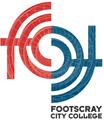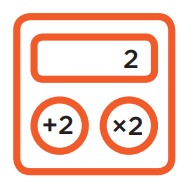COMPUTATIONAL AND ALGORITHMIC THINKING COMPETITION

In March this year, a number of FCC students participated in the Computational and Algorithmic Thinking (CAT) Competition, run by the Australian Mathematics Trust. The CAT competition is a one-hour problem solving competition designed to encourage student curiosity and promote multiple modes of thinking. The competition is not about computer programming ability but rather identifies students’ computer programming potential - something that they might not normally have the opportunity to demonstrate. I'm pleased to say that Ben Luong in year 10 achieved a perfect score in the Intermediate division - well done Ben!
Here is a complete list of students who received awards:
Zac Sayle, Year 7: Distinction
Giaan Nguyen, Year 7: Credit
Andrew Galloway, Year 7: Credit
Xavier McLean, Year 7: Credit
Keira Pattinson, Year 9: Credit
Ben Luong, Year 10: High Distinction
Alifia Feba Salsabila, Year 10: Credit
Jakob Howard, Year 11: Credit
Joe Allen, Year 12: Credit
Congratulations to all students who participated!
An example of the type of problems in the competition follows:
Alex’s favourite number is two. She plays a number game on her special Twos calculator. The calculator has only two operation buttons: +2 which adds 2 to the number shown ×2 which doubles the number shown.
She can press the buttons as many times as she likes, making the answer bigger each time. She always tries to press as few buttons as possible to get to her preferred number. Starting at 2, she could get to 8 by pressing ×2 +2 +2, but this would take more button presses than ×2 ×2.
If the calculator starts at 2, find the fewest number of button presses to get to:
a) 10
b) 100
c) 1000
If you enjoy solving these types of puzzles, you might like to take part in the competition next year! We will also be seeking students to take part in the Australian Informatics Olympiad in August - a 3-hour contest where students solve similar (but more challenging) problems by writing short computer programs.
Victor Rajewski

